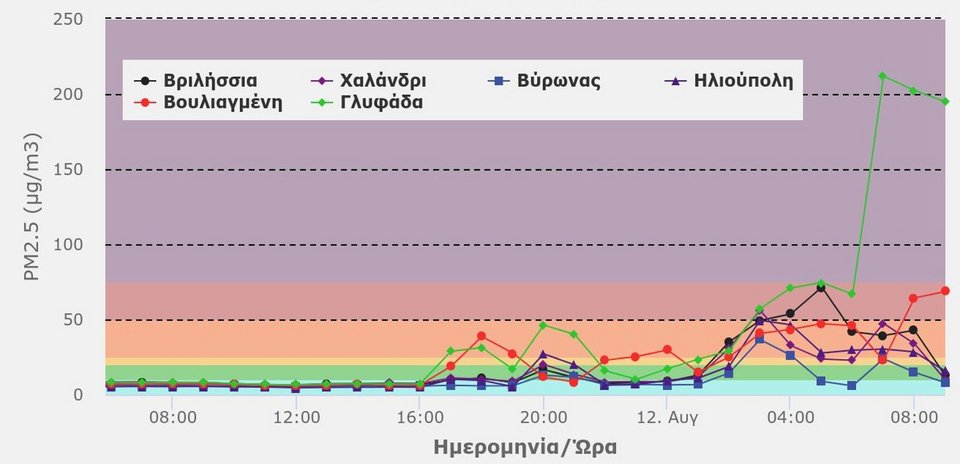After the great fire in Attica, the National Observatory of Athens made the first assessment of the basin’s air quality.
Study demonstrates extent of air pollution from fires burning in Attica. It records the changes as they are recorded hour by hour, but also the areas most affected by suspended particles.
The observatory also publishes the chart below with area-wise air quality ratings. Areas in pink are considered hazardous to the entire population, while orange is considered hazardous to vulnerable groups. Areas with moderate air quality in yellow and areas not facing air quality problems in green.

Study of the National Laboratory of Athens
Assessment of air quality due to the fire in Varnavas Attica on August 11, 2024 at 15.00 pm.
A picture of the average hourly levels of PM2.5 suspended particulate matter in Attica’s atmosphere, so far, follows nightly monitoring and updates from the National Observatory of Athens on the prevailing conditions and the rapid spread of the fire to the south, under the influence of strong northerly winds approaching Nea and Palaia Penteli since the dawn of 12 August:
- Since the outbreak of the fire, in the initial phase high smoke was generated in the upper atmospheric layers, increased levels were reported in the area of Vouliagmeni and Glyfada and the values ranged from 30 to 50 micrograms per cubic meter.
- After 3.00 midnight, the levels gradually increase in other measurement locations in the eastern part of the basin (Virilisia, Salandri, Pyronas, Iliopoli) and in the southern part of Athens, where particularly high values are noted. The Glyfada area continues to be the busiest.
- In particular, concentrations reached up to 70 micrograms per cubic meter in some of the aforementioned areas, while in Glyfada they exceeded 200 micrograms per cubic meter in the early hours of the morning.
- Nighttime background values at the remaining basin measurement sites are generally less than 10 micrograms per cubic meter.
We are constantly monitoring the development of the meetings, while citizens can be updated on the situation on a continuous basis by following the online platform https://air-quality.gr/
The air quality monitoring network operating within the National Research Infrastructure PANAKEIA for the Study of Atmospheric Composition and Climate Change records the concentrations of suspended PM2.5 particles on a continuous basis through calibrated sensors.





More Stories
Acrylic vs. Must-Have Acrylic Brushes for Perfect Nail Art
Technological Advancements in Tortoise Tracking and Monitoring
Criminal gang in Mykonos encouraged women into prostitution – how they set up romantic dates